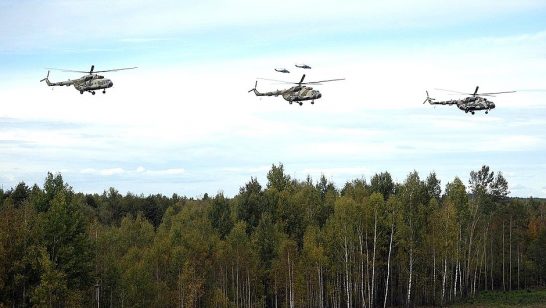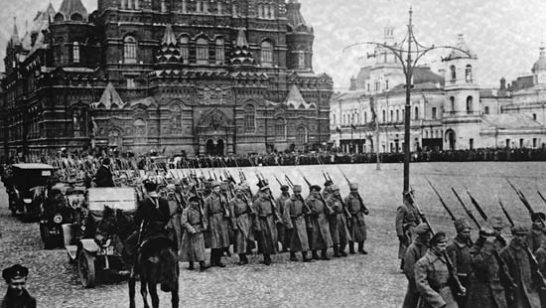
Russia’s recently held combined strategic exercise, Zapad 2017, which concluded on September 20th, offers valuable lessons on the evolution of Russian armed forces, and no less important, a message to NATO. The exercise was not simply significant both in terms of what it demonstrated about current Russian capability and the capacity to deploy forces into the Baltic region, but equally important as part of a sustained political message to the United States and the Alliance, seeking to establish coercive credibility should a crisis arise. In this article I offer a brief synopsis of the main takeaways from Zapad 2017, along with its political implications.
Despite warnings and hand wringing on the part of Baltic states, and leading NATO officials, nothing particularly untoward happened either to NATO’s Eastern Flank member states or Russia’s titular ally Belarus. On the contrary, Zapad 2017 was decidedly much smaller than expected, and loud pronouncements in media outlets anticipating something on the order of 100,000 troops went unfulfilled. In truth, they were never grounded in facts, and neither were some of the more sensational statements made by certain Western leaders. Thus it should come as no surprise that none of these premonitions came true.
Somewhat surprisingly, Zapad 2017 was perhaps one of Russia’s more modest annual strategic exercises to date, though that should in no way undersell its significance. On the whole, perhaps around 45,000 troops took place in Zapad, with maybe half that number in the Baltic and Arctic region and the rest in Southern and Central Military Districts. This figure encompasses both Russian and Belarusian troops engaged.
The official exercise lasted only a week, but the event was a training capstone amidst a high tempo of annual qualification checks, missile tests, and a host of other drills taking place in the Russian armed forces. These exercises have continued through October as part of a busy exercise season, typical for this time of year, but nonetheless making it quite difficult to discern where Zapad 2017 stops and other exercises begin. That is not a bug, but rather a feature of Russian General Staff planning, inherently obfuscating what is and what is not actually part of these large scale exercises to avoid fulfilling political commitments under the Vienna Document.
The exercise scenario consisted of two phases, which were rather indicative of what Russian planning for a military contingency in Belarus might look like. The first phase countered an incursion made by irregular adversary formations intended to destabilize Belarus, and the second a de facto escalation against a NATO led military operation, which Russia invariably defeats. In this regard it was not dissimilar to Zapad 2013 (the exercises rotate between four strategic directions making Zapad a quadrennial event). It’s unclear though to what extent Russian forces inflicted a counter attack after organizing an initial defense against their hypothetical adversary, which in reality was a coalition of NATO states led by the U.S.
Early into the exercise, Russian forces simulated defensive operations, getting units underway, ships out of port, and providing the logistics to shift forces into the Baltic region. The various activities by Russian Aerospace Forces reflected planning for both vertical and horizontal escalation, as Russian units simulated defense against incoming cruise missiles strikes and a U.S. led air offensive intended to disrupt interior lines of communication. Throughout the exercise Russian forces drilled in complex scenarios, working to keep NATO out of Russian airspace, maneuvering ground formations under fire, covering unit movements from observation, and deploying naval forces to deny access to Russian maritime approaches.
Zapad 2017 showed off traditional Russian strengths: massed firepower, armor, mechanized infantry, and effective integration of layered air defenses. The proliferation of drones across Russian units was quite notable, integrating small and medium sized systems into artillery, airborne, and electronic warfare units. Equally important was the focus on logistics units, able to provide bridging, communications, satellite links, and the like to enable a large scale military operation. Later on the exercise featured missile fires, from ships, coastal defense cruise missile batteries, and Iskander R-500 ground based cruise missiles: the long arm of Russia’s armed forces.
Undoubtedly the various offensive missile fires were also meant to convey Russia’s ability to employ non-strategic nuclear weapons, i.e. engage in thresholds of conflict where it retains strong competitive advantages. Zapad 2017 was bookended by two strategic missile tests on September 12th and 20th, though it is unlikely that either was a component of the exercise itself. One the whole, this demonstration of traditional conventional military power was complemented by improvements in organization, an emphasis on support units, command and control of combined arms operations and a show of willingness to sustain the fight across all of Russia’s Military Districts.
Zapad 2017 was less an exercise of brutish intimidation: Russia had far more military power available than was on display. The political intent was to continue a conversation Moscow has been having with the United States since Zapad-1999, and maintain coercive credibility in a potential conflict with NATO over Belarus, or elsewhere on Russia’s periphery. The consistent message has been that Russia has the capability and resolve to deploy forces into the region, mount an effective defense against Western superiority in airpower, and conduct offensive strikes to compel NATO to terminate hostilities.
Western reactions proved an incoherent mix of prudent vigilance and ill informed alarmism, a visible area for future improvement. Intellectually the Alliance has clearly not made the transition from raising awareness of the Russian threat to working on deterring it. This stood in stark contrast to the calm with which Vladimir Putin dismissed NATO exercises at a recent Valdai discussion in Sochi.
Moscow has legitimate cause to grow more confident that it can establish coercive credibility with fewer troops on the field. The impact of Russian military reforms and modernization is tangible, albeit uneven and incomplete. Still, there is some merit in Moscow’s self-assessment that its forces are increasingly capable of deterring NATO without overreliance on nuclear escalation. That said, Zapad 2017, like other strategic exercises, implied that this option is not only on the table, but very much an integral component of Russian thinking about deterrence in conflict and escalation control.
The opinions articulated above represent the views of the author(s), and do not necessarily reflect the position of the European Leadership Network or any of its members. The ELN’s aim is to encourage debates that will help develop Europe’s capacity to address the pressing foreign, defence, and security challenges of our time.



